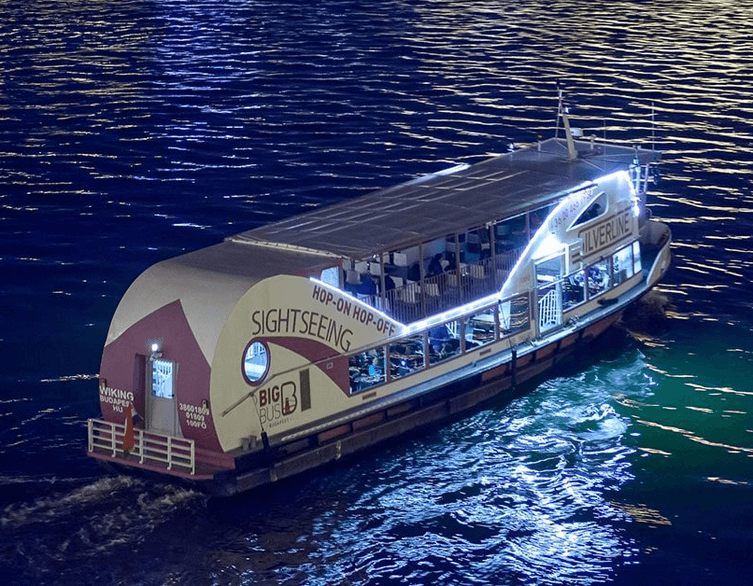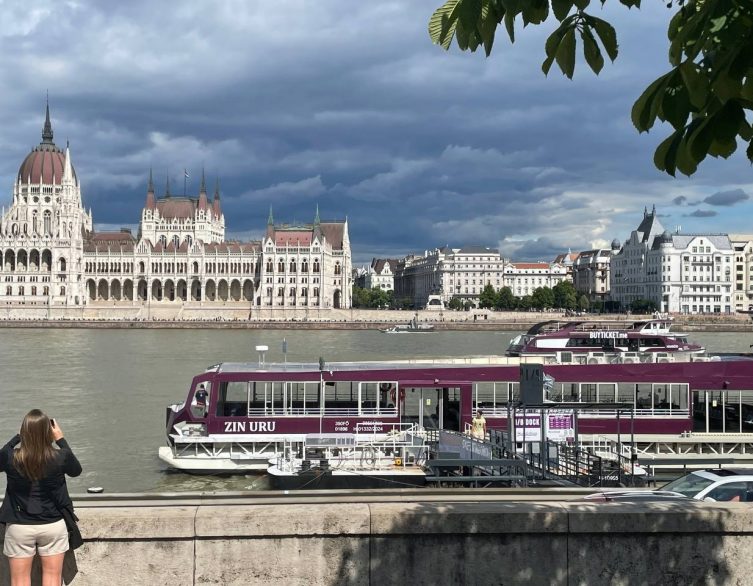Budapest Braces for Record-Breaking Heat as Hungary Issues Top-Level Emergency Alert

Starting Thursday, August 14th at midnight and lasting through Sunday night, Hungary has declared a third-degree heat alert – the highest possible warning level in their meteorological playbook. This isn’t your garden-variety summer warmth that makes you reach for a cold drink. This is the kind of heat that makes even seasoned locals pause and say, “Maybe today isn’t the day for that walking tour.”
The Heat Alert That Has Everyone Talking
The country’s Chief Medical Officer, working alongside HungaroMet (Hungary’s meteorological service), has essentially put up a giant neon sign that says “Danger: Contents Under Pressure” across the entire nation. Daily average temperatures are expected to soar above 27°C (81°F), with peak afternoon temperatures potentially hitting a scorching 35°C (95°F) or higher. For context, that’s hot enough to make Budapest’s famous thermal baths feel like a refreshing escape rather than a relaxing indulgence.
When Mother Nature Goes Full Drama Queen
What makes this heatwave particularly noteworthy isn’t just the temperature readings – it’s the perfect storm of conditions that have meteorologists genuinely concerned. Hungary has been experiencing what can only be described as nature’s version of a drought diet, with precious little rainfall to cool things down. The vegetation across the country has become so parched that it’s practically begging for moisture, creating conditions that would make a matchstick factory nervous.
Since Sunday, August 11th, the entire country has been operating under a complete fire ban. This isn’t just a gentle suggestion to maybe skip the barbecue – it’s a full-scale prohibition on lighting fires anywhere outdoors, including in forests and within 200 meters of wooded areas. Even those designated fire pits that usually welcome weekend warriors with their grilling ambitions are off-limits. The ban extends to private gardens in many cases, though some controlled cooking is still permitted with strict supervision.
Best deals of Budapest
The statistics paint a sobering picture: this year alone, Hungary has recorded 8,106 outdoor fires, resulting in 55 injuries and burning through 93 million square meters of land – that’s roughly the size of 13,000 football fields gone up in smoke. When you consider that the slightest spark can turn into a raging inferno in these conditions, the fire ban starts looking less like bureaucratic overreach and more like essential survival strategy.
What This Means for Your Budapest Adventure
If you’re currently in Budapest or planning to visit during this thermal marathon, don’t panic – but definitely adjust your expectations and your itinerary. The heat alert represents a genuine health risk for everyone, regardless of age or fitness level. This isn’t about being dramatic; it’s about recognizing that even healthy adults can struggle when temperatures climb this high and stay there for extended periods.
The good news is that Budapest is well-equipped to handle extreme weather events. The city’s extensive public transport system includes air-conditioned vehicles, and many of the capital’s famous attractions offer climate-controlled environments. Museums, shopping centers, and historic buildings with modern amenities become your new best friends during peak heat hours, typically between 11 AM and 4 PM.
Smart Strategies for Surviving the Sizzle
Hungarian authorities aren’t just issuing warnings – they’re providing a roadmap for staying safe and comfortable during this meteorological challenge. The key is treating hydration like a full-time job, drinking water consistently rather than waiting until thirst strikes. This means carrying water bottles, knowing where public fountains are located, and avoiding alcohol and caffeine-heavy drinks that can actually increase dehydration.
Food safety becomes crucial when temperatures soar. That street food you’ve been craving? Make sure it’s fresh and from reputable vendors. Anything that’s been sitting in the heat for extended periods should be avoided, and if you’re staying in accommodations with kitchen facilities, be extra vigilant about proper food storage.
The timing of your activities matters more than ever. Early morning and late evening become prime time for outdoor exploration, while midday hours are perfect for indoor attractions. Budapest’s famous ruin bars, with their indoor sections, suddenly seem like genius architectural planning rather than just quirky design choices.
The Hidden Dangers Beyond the Obvious
While everyone focuses on staying cool and hydrated, this heatwave brings some unexpected risks that tourists might not consider. The extreme temperatures can affect vehicle performance and safety, making rental cars and public transport potentially more stressful environments. Never, under any circumstances, should children, elderly people, or pets be left in parked vehicles, even for brief moments. Car interiors can reach lethal temperatures within minutes.
The heat can also affect indoor air quality in older buildings that rely on natural ventilation rather than modern air conditioning systems. Carbon monoxide risks increase when ventilation systems struggle to cope with extreme temperatures. This year alone, emergency services have responded to 245 carbon monoxide incidents during the summer months.
A City That Knows How to Handle the Heat
Despite the challenging conditions, Budapest remains one of Europe’s most resilient capital cities when it comes to extreme weather management. The Hungarian government has developed comprehensive emergency response protocols, with disaster management teams on high alert throughout the warning period. Public health officials have increased resources for heat-related health issues, and community support initiatives encourage residents and visitors to look out for one another.
The city’s infrastructure, from its extensive underground metro system to its historic thermal baths, provides multiple options for cooling down and staying comfortable. What might seem like an overwhelming challenge actually becomes an opportunity to experience Budapest differently – focusing on indoor cultural attractions during peak heat, enjoying early morning walks along the Danube when temperatures are more manageable, and discovering the city’s excellent air-conditioned dining scene.
Looking Ahead with Practical Optimism
This third-degree heat alert represents the most intense weather warning Hungary can issue, but it’s also temporary. By Monday morning, August 18th, conditions are expected to begin moderating, though temperatures will likely remain above average for the season. The experience serves as a reminder that climate patterns across Central Europe are becoming more intense, with Hungary and neighboring countries experiencing the effects of global warming more rapidly than many other European regions.
For tourists, this situation actually demonstrates Budapest’s preparedness and professionalism in handling extreme weather events. Emergency services, public transport operators, and tourism infrastructure have all adapted their operations to ensure visitor safety and comfort. The heat alert system itself shows a government that takes public safety seriously and communicates clearly with both residents and visitors.
Rather than viewing this as a travel disruption, consider it an authentic glimpse into how one of Europe’s most historic cities adapts to modern climate challenges while maintaining its charm and accessibility. With proper preparation, appropriate expectations, and a willingness to adjust your schedule slightly, Budapest in extreme heat can still offer an unforgettable experience – just with a few more air-conditioning breaks than you originally planned.
Related news




















